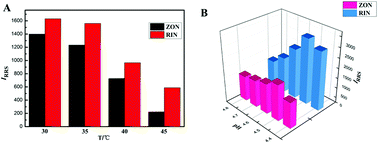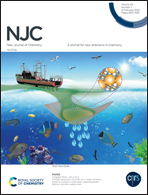High-performance liquid chromatography associated with resonance Rayleigh scattering spectral study of the interactions of palladium(ii)–antimigraine chelates with Erythrosin B and their analytical applications†
Abstract
For the first time, a highly sensitive and selective detection technology of high-performance liquid chromatography associated with resonance Rayleigh scattering spectra (HPLC-RRS) is applied to analyze migraine drugs including zolmitriptan (ZON) and rizatriptan (RIN). In an HAc–NaAc buffer solution (pH = 4.5), ZON and palladium(II) chelate to form a chelating cation, namely, [Pd·ZON]2+, and then react with Erythrosin B (Ery) via electrostatic attractions and hydrophobicity to form a ternary complex, [Pd·ZON]·Ery2, resulting in a significantly enhanced RRS signal. The RRS signal was detected at the synchronous model. The calibration curves of ZON and RIN were linear in the range from 0.027 to 25 μg mL−1, and the detection limits (S/N = 3) were 9.70 ng mL−1 and 4.76 ng mL−1, respectively. In addition, the HPLC-RRS method showed that the recovery of the two migraine drugs was 98.90% to 100.87% and the RSD (n = 6) was 1.67% to 4.86%. In this study, the experiment conditions were optimized, and the reaction mechanism and reason for increment in RRS were studied. In human urine samples, the established method was applied for the synchronous detection of two antimigraine drugs with satisfactory results.



 Please wait while we load your content...
Please wait while we load your content...